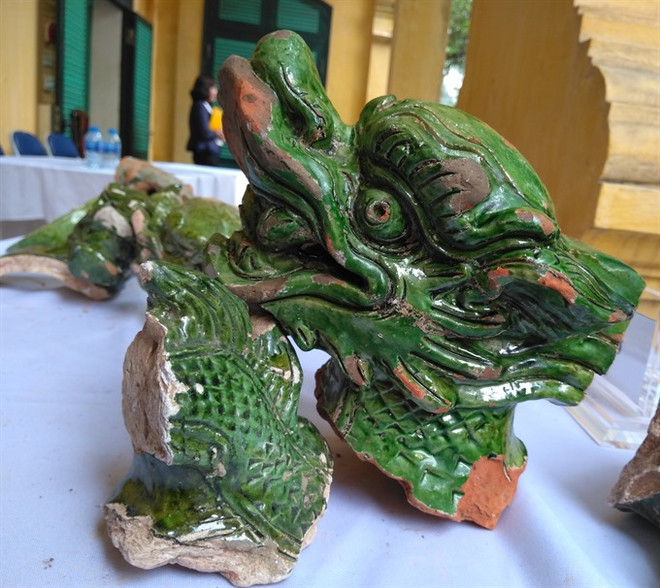Hanoi (VNA) – Many traces offormer building and artefacts found during the 2017 excavation of the KinhThien Place in centre of the Thang Long Royal Citadel have been announced at a scientificseminar in Hanoi on April 17.
The excavation had been conducted by the Thang Long-Hanoi Heritage PreservationCentre and the Vietnam Institute of Archaeology on a total area of nearly1,000sq.m in the main area of Kinh Thien Palace since 2012.
According to the Thang Long - Hanoi Heritage Preservation Centre, thearchaeological vestiges show that the area once held major structures of theLy, Tran, and Le Dynasties (from the 10th to 20th centuries) but their sizesand functions have yet to be determined and further research is needed.
The vestiges include stone bases ofcolumns, walls, and courtyards, stone foundations, perimeter walls, anddrainage passages.
The 2017 excavation also unearthed thelargest ever number of bricks and tiles that were used to decorate palace roofsin the 15th and 16th century, the Centre said.
It is hypothesised that the Kinh ThienPalace was roofed with yellow and azure enamelled tiles and decorated withintricate dragon patterns, which researchers say are significant materials thatcould help with the reconstruction of the palace.
“Each line of the tiles is shaped like adragon with the body lying along the roof. The line ends with a dragon tail andstarts with a dragon head carved sophisticatedly. The dragon with five-clawlegs was used on the roof of the king’s palace, while the one with four-clawlegs was used on the roof of the crown prince’s palace. The pieces we found areexactly how they have been described in history,” Archaeologist Tong Trung Tin said.
At the conference, experts suggested thatthe excavation site should be widened to give a panoramic view of Kinh Thien Palaceas well as an insight into the architectural works of different dynasties inthe past.
“Findings of the excavation last yeardemonstrated the variety and complexity of the relics within the main area ofthe palace as well as contributed to clarifying the enormous value of the ThangLong Citadel,” said Bui Minh Tri, director of the Centre for Royal CitadelStudies.
“I suggest the archaeologists draw a map ofthe whole site to facilitate further research. The map cannot be accuratebecause we have not dug out the whole site yet, but it can certainly helppeople get a glimpse of the relics,” Tri said.-VNA





























